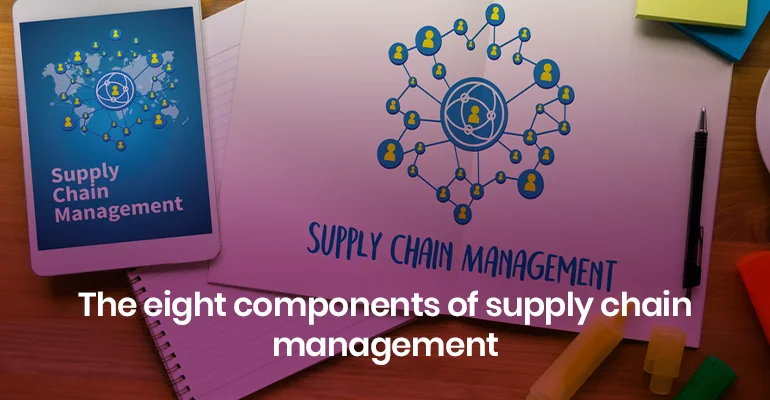Simple bread and butter with which we eat each day, actually gets to us through several processes. In this instance, bread begins its journey with the farmer who sows the seeds and sells the wheat to the businessman, who in turn sells it to the baker who bakes the bread. This is a description of supply chain management in a nutshell. In other words, supply chain management is a network of those businesses that are interconnected with each other in either the manufacturing of products, or delivering services, that are required by consumers.
It is very important for businesses to ensure two things for their supply chain to be effective, one is the supply chain should be cost effective and second it should deliver the results on time. We began with the description of supply chain management of bread. It is a very simple one. There are many complicated supply chain management processes that differ with the size of the business as well as the complexity of the chain and the number of products involved at each step. Thus, supply chain management begins at the origin of the product or service, and ends at the delivery and consumption of the same by the end user.
There are a million things which we use or consume in our everyday lives, and supply chain management weaves through it all, creating a harmonious and efficient environment. Any break in this chain can actually result in disruption of the system with a domino like effect. Supply chain management is made up of a few components that are very important as well as critical to the system. We shall discuss each of the components in brief.
1. Planning
This is one of the most important stages. Before the beginning of the entire supply chain, it is essential to finalise the strategies and put them into place. Checking the demand for the product or service, checking the viability, costing, profit, and manpower etc., are vital. Without a proper plan or strategy in place, it will be well-nigh impossible for the business to achieve effective and long term benefits. Therefore, enough time has to be devoted to this phase. Only after the finalisation of the plans and consideration of all pros and cons, can one proceed further. Every business needs a plan or blueprint or a roadmap based on which the strategies are made. Planning helps to identify the demand and supply trends in the market and this, in turn, helps to create a successful supply chain management system.
2. Information
The world today is dominated by a continuous flow of information. In order to be successful, it is essential that a business stays abreast with all the latest information about the various aspects of its production. The market trends of supply and demand for a particular product can be best understood if the information is properly and timely disseminated through the many levels of the business. Information is crucial in a knowledge-based world economy, and ignorance about any aspect of business may actually spell doom for the prospects of the business.
3. Source
Suppliers play a very crucial role in supply chain management systems. Products and services sold to the end user are created with the help of different sets of raw materials. It is therefore necessary that suitable quality raw materials are procured at cost effective rates. If a supplier is unable to supply on time, and within the stipulated budget, the business is bound to suffer losses and gain a negative reputation.
It is crucial that a company procures good quality resources so it can create good quality products and maintain its reputation in the market. This necessitates a strong role for suppliers in the supply chain management system.
4. Inventory
For a highly effective supply chain management system it is essential that an inventory is kept and thoroughly maintained. An inventory means the ready list of items, raw materials and other essentials required for the product or service. This list has to be regularly updated to demarcate available stock and required stock. Inventory management is critical to the function of supply chain management, because without proper inventory management the production, as well as sale of the product, is not possible. Businesses have now started to pay more attention to this component simply because of its impact on the supply chain.
5. Production
Production is one among the most important aspects of this system. It is only possible when all the other components of the supply chain are in tandem with each other. For the process of production to start it is essential that proper planning and supply of goods, as well as the inventory, are well maintained. The production of goods is followed by testing, packaging and the final preparation for delivery of the finished product.
6. Location
Any business, that wants to survive as well as flourish, needs a location which is profitable for the business. Take for example, a carbonated drink factory is set up in an area where water supply is scarce. Water is a basic necessity of such business. The lack of water could hamper the production as well as affect the goodwill of the company. A business cannot survive if it has to share an already scarce raw material with the community. Hence, a suitable location, which is well connected, and very close to the source of essential resources for production is vital to a business’ prosperity. The requirement and availability of manpower must also be considered while setting up a business unit.
7. Transportation
Transportation is vital in terms of carrying raw materials to the manufacturing unit and delivering the final product to the market. At each stage, timely transportation of goods is mandatory to sustain a smooth business process. Any business which pays attention to this component, and takes good care of it, will benefit from the production and transportation of its goods on time.
It is essential that a company works towards a safe and secure transportation process. Be it in-house or a third-party vendor, the transportation management system must ensure zero damage and minimal loss in transit. A well-managed logistics system along with flawless invoicing are the two pillars of secure transportation.
8. Return of goods
Among the various components that create a strong supply chain is the facility for the return of faulty/malfunctioning goods, along with a highly responsive consumer grievance redress unit.
No one is infallible. Even a machine may malfunction once in a million times if not more. As a part of a strong business process, one may expect the return of goods under various circumstances. Even the best quality control processes may have unavoidable momentary lapses. In the case of such lapses, inevitably followed by consumer complaints, a business must, instinctively, recall the product/s and issue an apology. This not only creates a good customer bonding, but also maintains goodwill in the long run.
The eight components discussed here are interdependent and ensure a smooth supply chain management system. It ensures the success and reputation of a business. A business must focus on all these components in order to create a flawless supply chain.
Businesses that have a strong supply chain management system in place always put great emphasis on all the components listed, and also ensure that management, as well as the teams at various levels, play by the rules. Profit is the bottom line and to make sure that the business achieves it, it is essential that the supply chain does not have any gaps. Any snag should be dealt with immediately and the weak links repaired or removed.
Demand and supply are two of the most important aspects of a business. For any business to be successful, trends, with respect to demand and supply, need to be studied carefully while implementing an effective plan of execution. A supply chain management system is required not just for the timely manufacture of goods; it is also a very critical system for ensuring that consumer requirements are met effectively.
References
Ballou, R.H., 2007. Business Logistics/supply Chain Management: Planning, Organizing, and Controlling the Supply Chain. Pearson Education India.
Christopher, M., 2016. Logistics & Supply Chain Management. Pearson UK.
Lambert, D.M. & Cooper, M.C., 2000. Issues in Supply Chain Management. Industrial Marketing Management, 29(1), pp.65-83.
Tan, K.C., 2001. A framework of supply chain management literature. European Journal of Purchasing & Supply Management, 7(1), pp.39-48.
FREE SCHOLARSHIP
Are you good enough to pass the postgraduate Level 7 Diploma in Business Management (which gives you enhanced entry onto MBA programmes)? If so then you should apply for the free scholarship place.
By an iQualify UK staff writer
1. Achieving Quality
In the classroom, there are children with behavioural, emotional, social or other challenges that may limit their learning abilities. Therefore, when the teacher identifies their weaknesses and applies measures to overcome them, their learners acquire education without any barriers. This ensures that the challenged learners do not feel left out or discriminated from the rest.
2. Developing Talents
The needs in the classroom are not always negative. Learners, especially young ones, are usually undergoing the process of understanding their skills. The teacher, however, is experienced enough to tell that a certain learner has a particular skill or talent. In this case, skills and talents become needs too because they require nurturing to develop. Therefore, once the teacher identifies them and provides the essential support to develop them, they help the learners to discover and grow them.
3. Creating Interest
Identifying and meeting individual learner needs boosts their morale and encourages them. In some cases, the learner does not gain much from mass instruction. As such, when the teacher provides individually prescribed instruction (IPI) it significantly helps many learners to understand and grasp educational concepts. This applies more to subjects such as mathematics and art. If a student feels supported by their tutor, they develop rather than lose interest in learning.
4. Planning Classroom Activities
Once the teacher is familiar with the personal needs of their learners, they can easily plan their day-to-day classroom activities, so they cater to all of them. For instance, the teacher will know how to plan the timetable for counselling, individual tutoring, group interactions and general supervision. In short, each activity targets the needs of specific students such that by the end of the day, every learner’s needs are fully met.
5. Organising the Classroom
The best way for a teacher to organise the classroom is by first identifying the characteristics of each learner. The learners that need more personalised instruction can sit closer to the teacher. If a student has visual difficulties, the teacher can sit him or her closer to the blackboard. They can also sit near a door or window where there is an abundance of light. In a nutshell, the needs of the learners should determine the availability of supplementary material, accessibility of equipment and supplies, as well as the seating arrangements.
Evidently, it is paramount that the teachers identify and meet individual learner needs when teaching. This is because it allows them to devote their energies beyond regular teaching into effective education that is supportive and considerate for each learner. In this way, the students are motivated, supported, empowered, and developed because optimum learning conditions are created.

